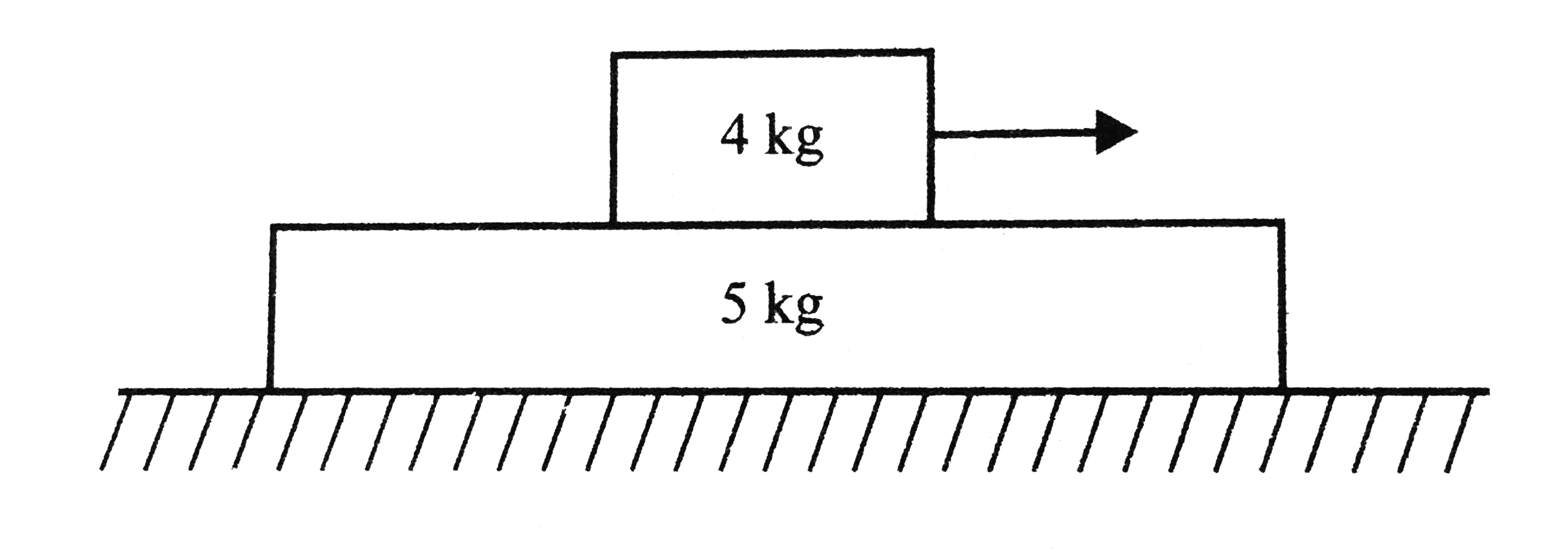During "elastic collision"
a) there is no loss of kinetic energy
b) the bodies are perfectly elastic
c) temporarily some of the kinetic energy is used to deform the bodies
d) after collision the bodies regain the original shape keeping the total energy constant
only "a" is true
a,b,c,d are true
b,c,d are true
a,b,c are true
The correct Answer is:(2)
To solve the question regarding elastic collisions, we need to analyze each option provided and determine their validity based on the principles of physics.
1. Understanding Elastic Collision:
- An elastic collision is defined as a collision where both momentum and kinetic energy are conserved. This means that the total kinetic energy before and after the collision remains the same.
2. Analyzing Option (a):
- Statement: "There is no loss of kinetic energy."
- Evaluation: This statement is true. In elastic collisions, the kinetic energy before the collision is equal to the kinetic energy after the collision.
3. Analyzing Option (b):
- Statement: "The bodies are perfectly elastic."
- Evaluation: This statement is also true. In an elastic collision, the colliding bodies are considered to be perfectly elastic, meaning they can deform and return to their original shape without any loss of energy.
4. Analyzing Option (c):
- Statement: "Temporarily some of the kinetic energy is used to deform the bodies."
- Evaluation: This statement is true as well. During the collision, the kinetic energy is temporarily converted into potential energy as the bodies deform. However, they regain this energy as they return to their original shape.
5. Analyzing Option (d):
- Statement: "After collision the bodies regain the original shape keeping the total energy constant."
- Evaluation: This statement is true. After the collision, the bodies do return to their original shape, and the total mechanical energy (kinetic + potential) remains constant throughout the process.
Conclusion:
Since all four statements (a, b, c, and d) are true regarding elastic collisions, the correct answer is that all options are correct.
Final Answer:
All options (a, b, c, d) are correct.
---
- An elastic collision is defined as a collision where both momentum and kinetic energy are conserved. This means that the total kinetic energy before and after the collision remains the same.
- Statement: "There is no loss of kinetic energy."
- Evaluation: This statement is true. In elastic collisions, the kinetic energy before the collision is equal to the kinetic energy after the collision.
- Statement: "The bodies are perfectly elastic."
- Evaluation: This statement is also true. In an elastic collision, the colliding bodies are considered to be perfectly elastic, meaning they can deform and return to their original shape without any loss of energy.
- Statement: "Temporarily some of the kinetic energy is used to deform the bodies."
- Evaluation: This statement is true as well. During the collision, the kinetic energy is temporarily converted into potential energy as the bodies deform. However, they regain this energy as they return to their original shape.
- Statement: "After collision the bodies regain the original shape keeping the total energy constant."
- Evaluation: This statement is true. After the collision, the bodies do return to their original shape, and the total mechanical energy (kinetic + potential) remains constant throughout the process.
Since all four statements (a, b, c, and d) are true regarding elastic collisions, the correct answer is that all options are correct.
All options (a, b, c, d) are correct.
Topper's Solved these Questions
- WORK , ENERGY & POWER BOOK - NARAYNACHAPTER - WORK , ENERGY & POWER EXERCISE - EXERCISE -III
54 Videos
- WORK , ENERGY & POWER BOOK - NARAYNACHAPTER - WORK , ENERGY & POWER EXERCISE - EXERCISE IV
43 Videos
- WORK , ENERGY & POWER BOOK - NARAYNACHAPTER - WORK , ENERGY & POWER EXERCISE - EXERCISE -II (C.W)
75 Videos
- WAVESBOOK - NARAYNACHAPTER - WAVESEXERCISE - Exercise-IV
56 Videos
- WORK POWER AND ENERGYBOOK - NARAYNACHAPTER - WORK POWER AND ENERGYEXERCISE - Level-VI (Integer)
12 Videos
Similar Questions
300J of work is done in slinding a 2 kg block up an inclined plane of height 10m. Taking g =10m/s2 , work done against friction is
View SolutionA large slab of mass 5kg lies on a smooth horizontal surface, with a block of mass 4kg lying on the top of it. The coefficient of friction between the block and the slab is 0.25. If the block is pulled horizontally by a force of F =6N, the work done by the force of friction on the slab, between the instants t=2s and t=3s, is (g=10ms−2)

View SolutionA particle is moved from (0, 0) to (a, a) under a force a F=(3ˆi+4ˆj) from two paths. Path 1 is OP and path 2 is OPQ. Let W1 and W2 be the work done by this force in these two paths. Then,
View SolutionThe transverse displacement y(x,t) of a wave on a string is given by y(x,t)=e−(ax2+bt2+2√(ab)xt). This represents a :
View SolutionA ball leaves the track at B which is at 3m height from bottom most point of the track. The ball further rises upto 4m height from the bottom most point before falling down. Find h (in m), if the track at B makes an angle 30∘ with horizontal.
 .
.
View SolutionAssertion: In an elastic collision of two bodies , the momentum and energy of each body is conserved. Reason: If two bodies stick to each other , after colliding , the collision is said to be perfectly elastic.
View SolutionWhich of the following statements is false for collisions-
(1)Momentum is conserved in elastic collisions but not in inelastic collisions.
(2)Total-kinetic energy is conserved in elastic collisions but momentum is not conserved.
(3)Total kinetic energy and momentum both are conserved in all types of collisions
(4)Total kinetic energy is not conserved in inelastic collisions but momentum is conserved
View SolutionStatement-1: Total kinetic energy during an elastic collision between two isolated bodies, is always constant. Statement-2: Total linear momentum during a collision between isolated bodies, is always constant.
View SolutionStatement-1 : In an elastic collision in one dimension between two bodies, total momentum remains the same before, during and after the collision. Statement-2 : In an elastic collision in one dimension between two bodies, total kinetic energy remains the same before, during and after the collision.
View SolutionStatement-1 : In a head on elastic collision between a moving body A with an initally stationary body B , the kinetic energy lost by A is equal to the kinetic energy gained by B till the instant of maximum deformation during their contact. Statement-2 : The total kinetic energy of system before and after collision is same in elastic collision.
View SolutionA body of mass m1 moving at a constant speed undergoes an elastic head on collision with a body of mass m2 initially at rest. The ratio of the kinetic energy of mass m1 after the collision to that before the collision is -
View SolutionThe total initial kinetic energy of the system in elastic collision compared to the total final kinetic energy of the system-
View SolutionStatement -I : If collision occurs between two elastic bodies their kinetic energy decreases during the time of collision.
Statement -II : During collision intermolecular space decreases and hence elastic potential energy increases
View SolutionA body of mass 5 kg collides elastically with a stationary body of mass 2.5 kg. After the collision, the 2.5 kg body begins to move with a kinetic energy of 8). Assuming the collision to be one-dimensional, the kinetic energy of the 5 kg body before collision is:
View Solution(A) : In an elastic collision of two bodies, the momentum and energy of each body is conserved. (R ) : If two bodies stick to each other, after colliding, the collision is said to be perfectly elastic.
View Solution

